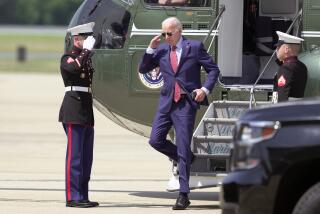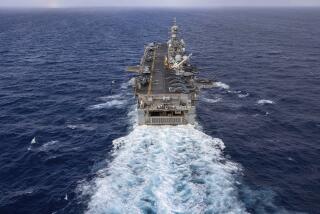More Boats and More Trains : Improved military transport capabilities mean stronger deterrence
- Share via
“It is said,” wrote Voltaire more than two centuries ago, “that God is always for the big battalions.” Maybe, but first those battalions and all their equipment and support units had better be where they’re needed.
The victory of the anti-Iraq coalition in the Persian Gulf War was helped incalculably by the massive pre-battle American buildup of troops and supplies. This triumph of logistics, however, unfolded over a period of six months, the time that passed between Saddam Hussein’s invasion of Kuwait in August, 1990, and the beginning of the U.N. Security Council-approved counterattack in January. A similar luxury of time can’t be counted on in the future.
The Pentagon, which in some cases had to scrounge for adequate transport to move supplies to Saudi Arabia, has now been forced to direct its attention to the need for greater air and sea mobility. Shortages in these areas have long existed. They have gone unremedied in good part because the Navy and Air Force--with congressional concurrence--have preferred to spend defense dollars on more glamorous, combat-related equipment--supersonic planes, tanks, aircraft carriers and cruisers and the like. But in the aftermath of the Gulf War, Congress earmarked $3.1 billion to expand air and sea-lift capabilities.
Now the Pentagon, as Melissa Healy of The Times reported on Wednesday, has prepared a secret blueprint on just what the services should be doing in coming years to improve mobility.
Leading the list of needed items are 20 fast new cargo ships, built to move heavy equipment to where it’s needed overseas. Such a fleet could cut the time required to deploy a force of the size used in Desert Shield by more than two-thirds. Also on the list are specially designed rail cars, to facilitate both the rapid movement and the loading of heavy equipment onto the new cargo ships. Congress also expects an expansion of airlift capability.
The final cost of new investment in mobility remains to be disclosed and debated. That vastly improved military transport is needed, though, is beyond dispute. In defense, readiness is all. Being able to mount a rapid response is very much a form of deterrence.
More to Read
Sign up for Essential California
The most important California stories and recommendations in your inbox every morning.
You may occasionally receive promotional content from the Los Angeles Times.













